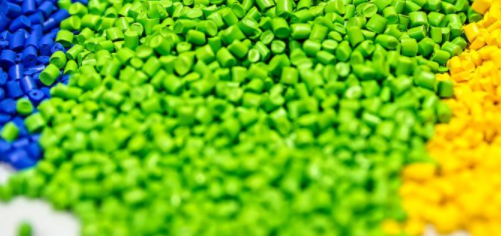Injection molding is suitable for a wide range of plastics. As in Runsom, we provide various materials with key characteristics for your special injection molding projects. In addition, we also serve you with standard surface finishes for different injection molded parts.
Materials for Injection Molding
All thermoplastics are able to applied for injection molding, and some thermosets and liquid silicones can also be compatible with injection molding process. These thermoplastic can be reinforced with fibers, rubber plastics, mineral or flame retardant, in order to modify their physical characters. Such as plastic pellets mix with fiberglass in ratios of 10%, 15% or 30% will give rise to higher stiffness for molded parts. We will present our common injection molding materials as following:
Polyethylene
Abbreviation as PE, this lightweight thermoplastic has good impact strength and weather resistance, which is most suitable for outdoor applications.
Polypropylene
Abbreviation as PP, this is the most common plastic in injection molding, it has excellent chemical resistance. This plastic is available for food-safe grades applications, but not suitable for mechanical applications.
ABS
As we know, ABS is a common thermoplastic in injection molding applications, it has high impact resistance, low cost and density, but it is vulnerable to solvents.
Polystyrene
Abbreviation as PS, this plastic is available for food-safe grade applications with low cost, but it is not suitable for mechanical applications.
Polyurethane
Abbreviation as PU, this thermoplastic has high impact strength, good mechanical properties and hardness, it is most suitable for parts molding with thick walls.
Nylon
Abbreviation as PA6, this engineering thermoplastic has excellent mechanical properties, high chemical and abrasion resistance, but it is susceptible to moisture.
Polycarbonate
Abbreviation as PC, it has the highest impact strength, high thermal resistance, weather resistance and toughness. This plastic can be colored or transparent.
PC/ABS
This plastic is a blend of polycarbonate and ABS, it has high impact strength, excellent thermal stability and high stiffness, but it is vulnerable to solvents.
POM
POM is a mixture of acetal and delrin, it is a popular engineering thermoplastic. This plastic has high strength, high stiffness, moisture resistance and self-lubricating properties, but it is prone to warp in injection process.
PEEK
This high performance engineering plastic has excellent strength, thermal and chemical resistance, it is normally applied to replace metal parts.
Silicone Rubber
This thermoset has excellent heat and chemical resistance with custom hardness, it is available for food-safe and medical grade applications.
Fiberglass is a common additive to improve stiffness of injection molded parts, it can mix with plastic pellets at ratio of 10%, 15% or 30%, result to different mechanical properties.
In addition, colorant is another additive to create various color plastic parts at a ratio of 3%. Our standard colors include red, green, yellow, blue, black and white. We also provide custom colors for your unique project.
Surface Finishes
Surface finishes are used in injection molding for cosmetic purposes and technical needs. The surface roughness can affect dramatically lifetime of sliding parts like plain bearings. Most injection molded parts are not post-processed, but molds cavities can be finished at different degrees. There is notice that rough surface will increase friction in ejection process, so larger draft angle is required. We display our common surface finished as following:
Glossy finish
For this finish, the mold will be smoothed at first, then polished with diamond buffs as a mirror-like finish. This finish roughness is less than 0.10μm, and suitable for smoothest finish for cosmetic or functional purpose. The final performance can reach mirror-like lenses.
Semi-gloss finish
The mold will be polished by fine grit sandpaper to get a fine surface finish, it is suitable for parts with a good visual appearance.
Matte finish
The mold will be smoothed by fine stone powder to remove all machining marks, it is suitable for parts with low visual appearance, except machining marks on surface.
Texture finish
The mold is smoothed by fine stone powder, then sandblasted to a texture surface, it is suitable for satin or dull textured surface finish.
As-machined finish
The mold is finished as machining operation, tool marks are visible on surface, it is suitable for parts with cosmetic requirement, like hidden components for industrial applications.
Once you need a glossy surface finish for your unique parts, there are useful tips as following:
- High glossy molds are not equivalent to high glossy molded parts, there are other factors affect the final appearance, like plastic resin types, molding condition and mold design. Such as ABS parts will have higher surface finish than PP parts.
- Finer surface finishes need higher grade mold materials, in order to achieve a very fine polish, we need the highest hardness of tool steels. This will finally increase the overall cost of material, machining time and post-process time.


